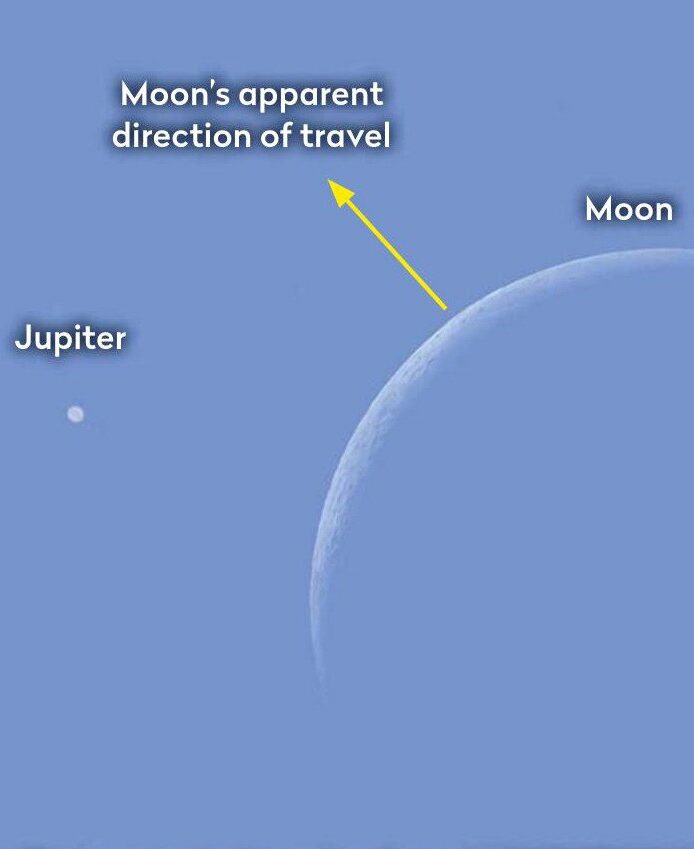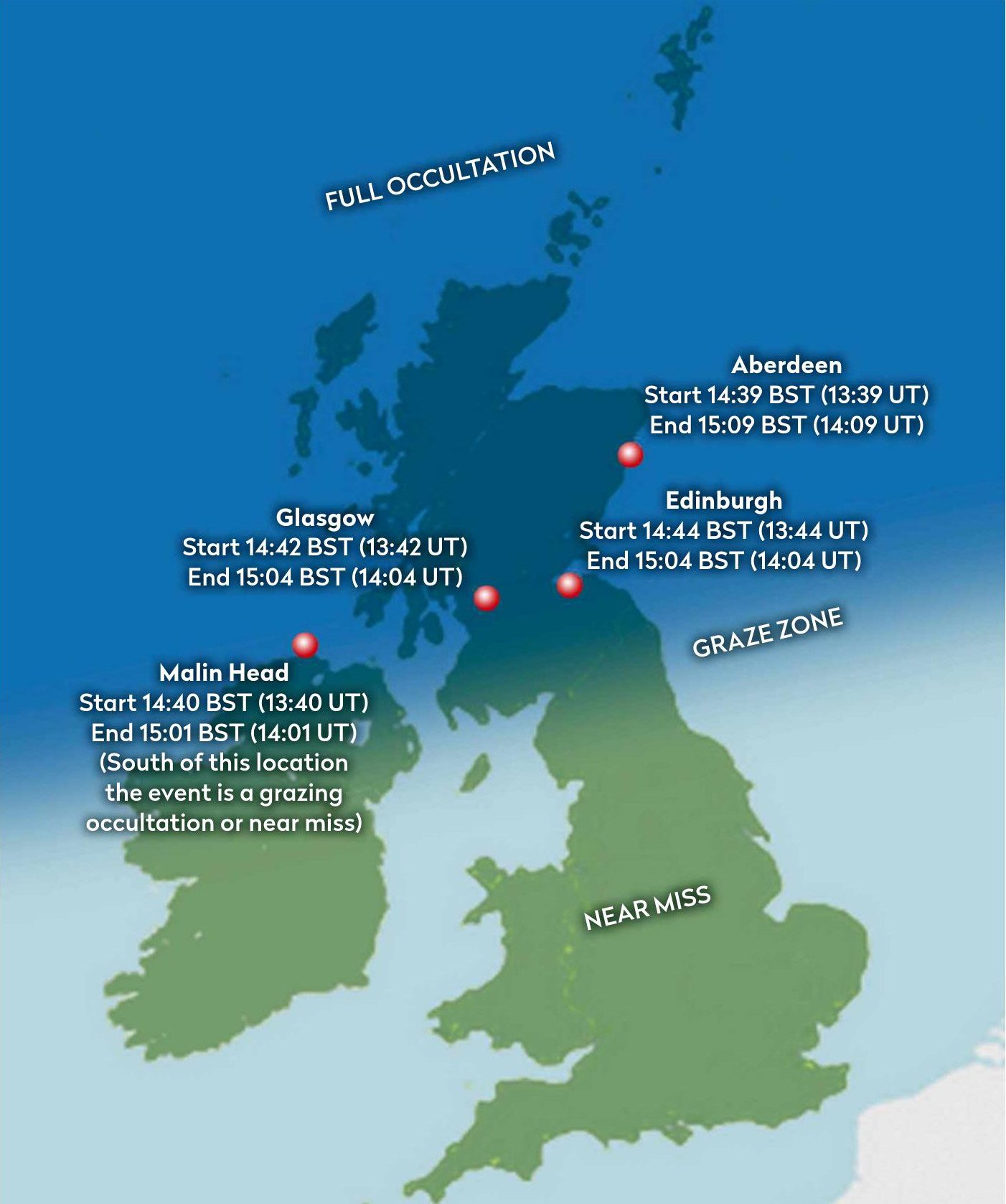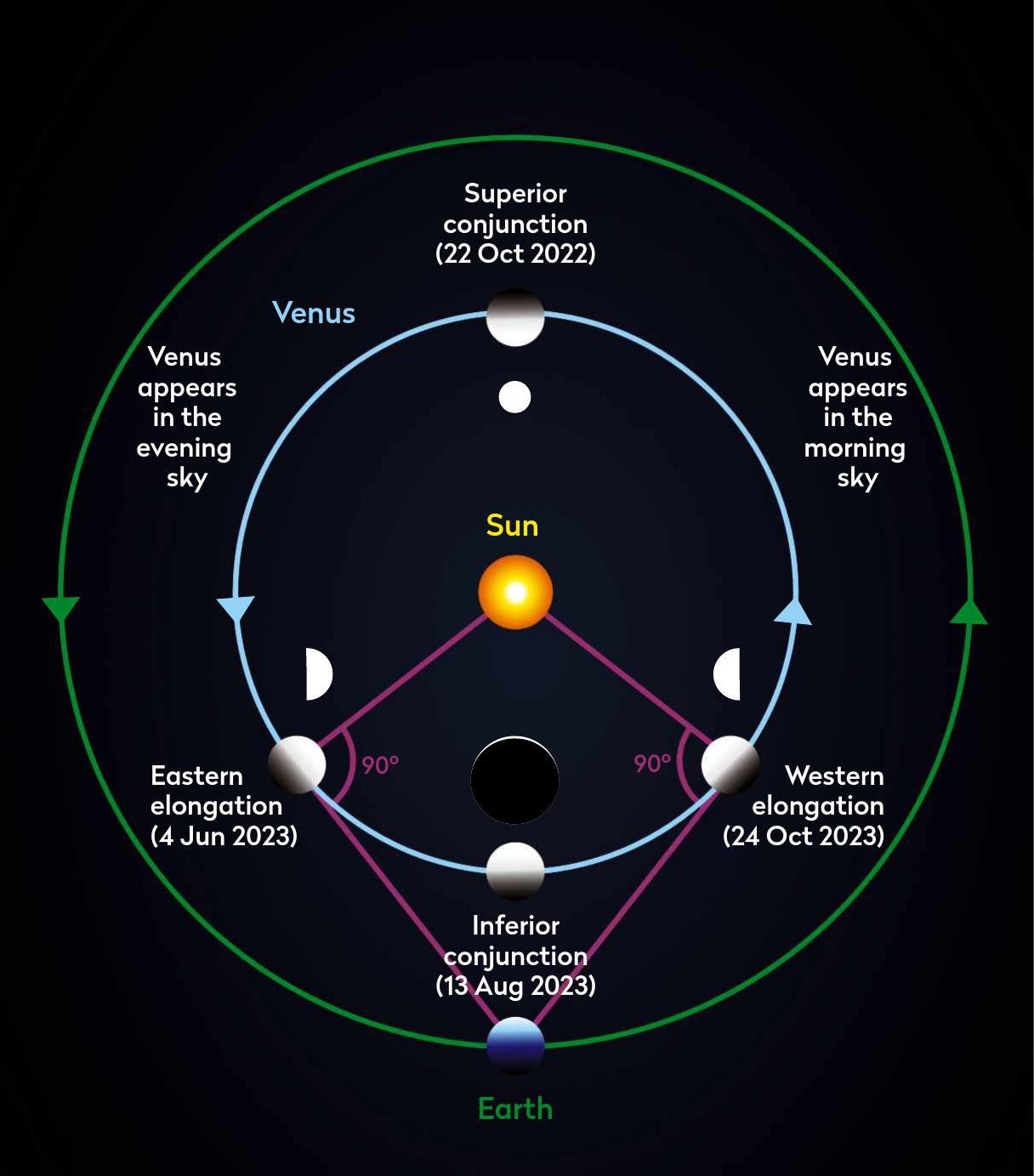The top sights to observe or image this month
DON’T MISS
Lunar occultation of Jupiter
BEST TIME TO SEE: 17 May, from 11:30 BST (10:30 UT) through to 15:30 BST (14:30 UT)
RECOMMENDED EQUIPMENT: Binoculars or small/medium telescope

Lunar occultations of planets aren’t very common at all. If you’ve been following events over the past few months, you might question this statement seeing as there have been three recent lunar occultations of Uranus and one of Mars visible from the UK. However, delve back before the first event, the lunar occultation of Uranus on 14 September 2022, and there weren’t any for several years before that. This month there’s a very rare lunar occultation of Jupiter, an event which comes with a couple of catches.
Jupiter is a morning planet currently, not particularly well-placed and rising just 50 minutes before the Sun, mid-month. As it pops up above the east-northeast horizon on the morning of 17 May, it will be accompanied by a slender, but quite visible 7%-lit waning crescent Moon. From the UK, the Moon will appear 5° to the right of mag. –1.9 Jupiter. Fifty minutes later, the Sun will rise and, if the weather is kind, the sky will turn bright blue.
At this point, you’re probably anticipating the first catch: the occultation occurs during daylight hours from the UK. Having said this, it’s still a perfectly feasible observation, although it will lack the spectacle of a nighttime lunar occultation of a bright Jupiter.

The Moon will be visible to the naked eye given cloud-free skies, but being a relatively thin crescent, it may need a bit of work to find. The pair are due south at 47° altitude from central regions of the UK at 11:24 BST (10:24 UT) on 17 May. This is a good time to try for the Moon using a telescope on a driven equatorial mount. The Sun is only 27° away though, so if you’re using binoculars or the naked eye to locate the Moon, take care and do so in the shadow of a house, fence or some other opaque obstruction that leaves the region to the right of the Sun clear.
At 14:30 BST (13:30 UT), Jupiter will appear like a ghostly echo of its nighttime self, close to the Moon’s southern edge. Now for the second catch: the occultation can only be seen from the north of the UK, mostly from Northern Ireland and Scotland. Those living in the fuzzy ‘graze zone’ may see Jupiter partly occulted by the Moon’s limb, his while those further south will witness a near miss.
Approximate timings for various locations are shown on the map above, observing being recommended from 14:20 BST (13:20 UT) through to 15:20 BST (14:20 UT).
Venus at dichotomy
BEST TIME TO SEE: 25 May–14 June
RECOMMENDED EQUIPMENT: Small/medium telescope

Venus is an inferior planet. This doesn’t mean it’s a lesser world than ours, it’s simply a reference to the size of its orbit. Inferior planets have smaller orbits than Earth, superior planets larger orbits. Mercury and Venus are inferior planets, the rest are superior.
Inferior planets are interesting to observe as their apparent sizes wax and wane noticeably over time and they show a full set of phases. Venus reaches greatest eastern elongation on 4 June, appearing 45.4° to the east of the Sun and brilliant in the evening twilight. The planet should appear at 50% phase, known as dichotomy, on this date.
The run up to dichotomy, say from 10 days before, is a good time to start making phase estimates and they’re really easy to do. Simply observe Venus through the eyepiece, noting whether the planet’s terminator is straight or curved. If straight, this is dichotomy. If curved, estimate how far across the diameter of Venus – at right angles to the terminator – the terminator extends. As an example, if the terminator stretched one-third across the diameter of Venus, this would be a 33% phase.
Starting to observe early gives you more experience at making accurate assessments. It’s easy to look and record ‘50%’ at a first glance, but is it really 50% or perhaps a little above or below that?
Why bother to do this? Surely the geometric position of Venus will give a precise and predictable value for its phase? Actually, this is not the case. The planet’s thick atmosphere interferes with the apparent phase, giving rise to the ‘phase anomaly’, an effect that makes dichotomy appear earlier than it should when Venus is in the evening sky. How early? Well, that’s up to you to find out!
2023’s NLC season
BEST TIME TO SEE: Last week in May through to early August
RECOMMENDED EQUIPMENT: Binoculars

Noctilucent clouds (NLCs) are high-altitude ice-sheet clouds that form in the mesosphere at a height of around 82km. For the Northern Hemisphere, NLC season runs from late May through to early August and spotting their elusive displays is a popular pastime, helping to counter the frustration of the shorter nights. NLCs are seeded by fragmentary dust from meteor trails. Tiny ice crystals form around these particles when the mesosphere cools. Mesospheric cooling, rather counter-intuitively, occurs in each hemisphere’s summer period.
If present, NLCs are typically seen 90–120 minutes after sunset, low above the northwest horizon, and a similar time before sunrise low above the northeast horizon. At such times, it’s dark or at least deep-twilight dark for us on the ground, but the clouds appear to shine. The light is from the Sun; at the great height of an NLC cloud the Sun still appears above the horizon.
NLCs often have an electric blue colour and exhibit fine, net-like structures. Appearing bright against a dark twilight sky, they are also very photogenic and may be bright enough to image with many models of smartphone camera.